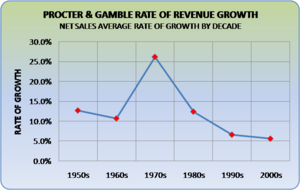
Image via Wikipedia
“…No matter what you own or are doing in life, without people to share it with, it means nothing.”
“…I’ve grown up at the beginning of the social networking phenomenon, it has just begun. ??I was a freshman in college when Facebook launched for real. ??I am not, nor have I ever been worried about my privacy online. There are basic things I do not to give myself a bad name online, but it’s not rocket science. I use Groupon and a bunch of the other social buying sites. I’ve used CouchSurfers to experience foreign countries through the eyes of real people instead of staying in hotels. I used Craigslist to find my apartment and all my furniture. If I want to know something I ask Wikipedia (the crowd). I’ve been moving many of the things I did own into the cloud. ??My music, videos, documents, I am a paperless person. I don’t really own these things anymore, I share a piece of them through services like NetFlix and Rhapsody, and free sites like Pandora, Grooveshark, Hulu, Boxee, etc…”
“…My generation has a different view on sharing, ownership, and privacy than those before us.”
This is one more time a vibrant testimony of the monumental shift that is taking place on this earth now.??
Leigh Drogen, author of this post, adds a little example of how gaining customer giving them for free your experience as a proof of your engagement.
I immediatly connect Leigh Drogen’s thoughts with the resumé of Tom Osenton‘s 2004 book “THE DEATH OF DEMAND: FINDING GROWTH IN A SATURATED GLOBAL ECONOMY” in Wikipedia.
“…Unless new innovation delivers “accretive” consumption, and/or an accretive appreciation in price, then the U.S. economy will likely grow at about the rate of population growth over the near term – approximately 1 percent.”
In Europe, economies are not pulled by internal consumption. We are even more dependent on innovation.
Is collaborative consumption put new life in the business cycle known as “Innovation Saturation“?
Is “social capital” the new motor of economy?
Related articles
Zemanta helped me add links & pictures to this email. It can do it for you too.


2 Comments
Add Yours →Isabelle,Collaborative consumption is an example of a logical, sensible and on-trend direction for consumers everywhere. But for traditional businesses and economies that have been built on selling more new cars, furniture, bicycles, etc. it completely disrupts the current model by:1. Moving the transaction off the conventional grid;2. Greatly lengthening conventional sales cycles (auto industry)An example is the profound growth of used car sales in the U.S. in recent years which now total more than 4 times that of new car sales (45+ million versus 11+ million). Collaborative consumption is a good thing – just not for those who keep score using archaic means of productivity and growth. Growth needs to be completely redefined in an economy that has pushed the boundaries of consumption to saturation and beyond (new cars sales in the U.S. in 2000 topped 17.8 million – a number unlikely to be reached again in our lifetimes). We have grown up thinking that more is better – and worse that it is always possible. It is not.
Hi Tom,Thx for commenting. I agree completly with you that our "western economic model" of consumption is moving (hard time for industries in Europe :/ ) to a "added-value economic model", in which western companies would grow if they create added-value according to the consumers’ needs or wishes. Collaborative consumption is a way of "adding value" in the market, offering innovative services to absorb the over-production of goods.My comment (and maybe yours) is only applying in western countries. We must not forget that "more is better" for 80% of the population of our planet.